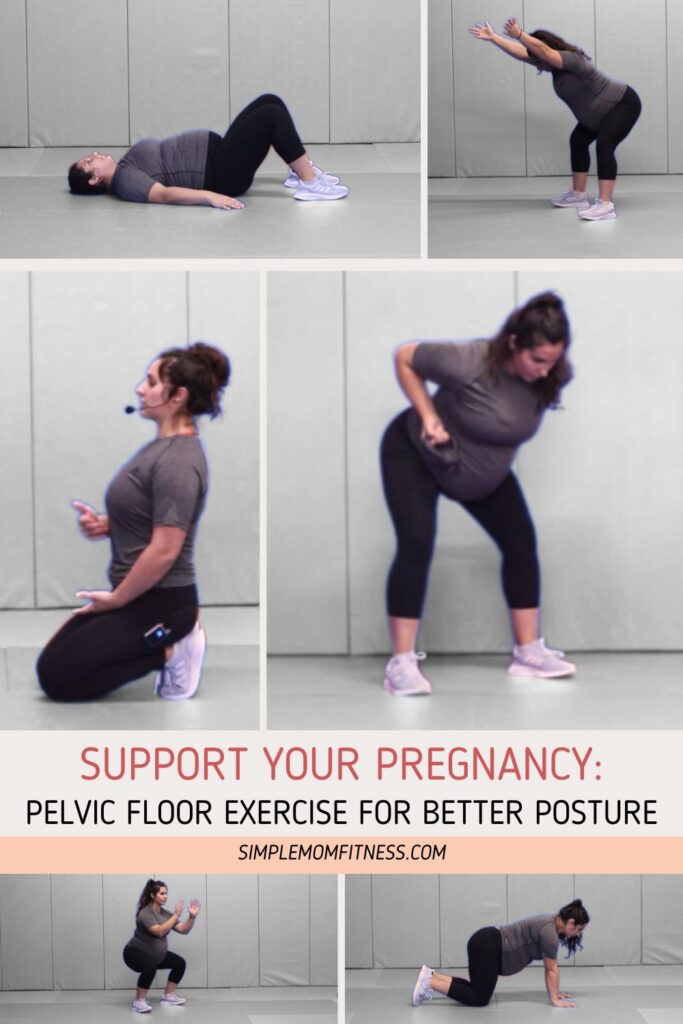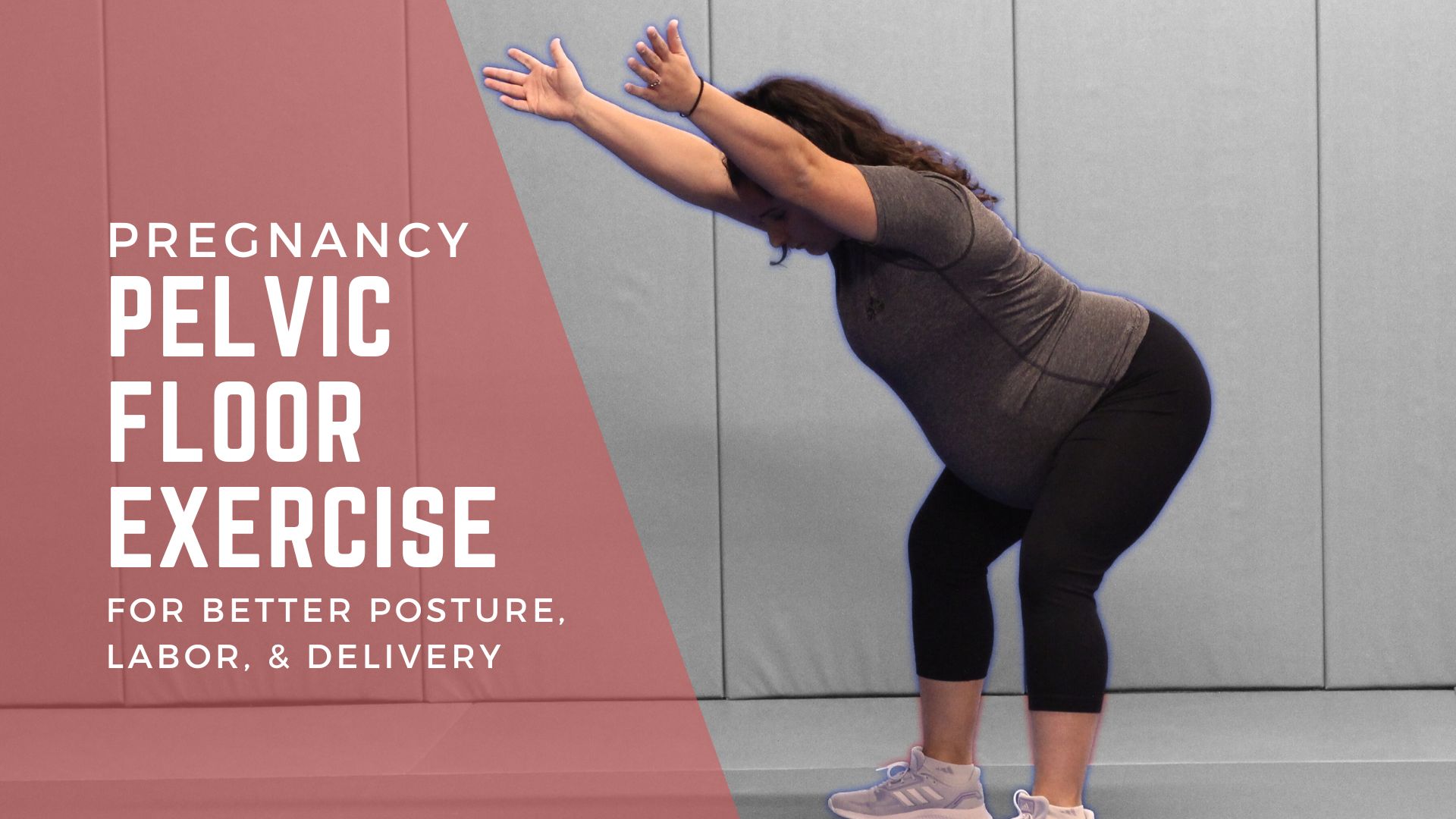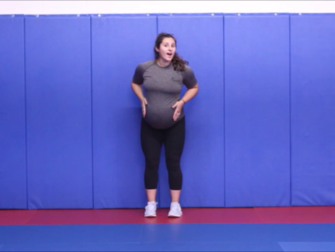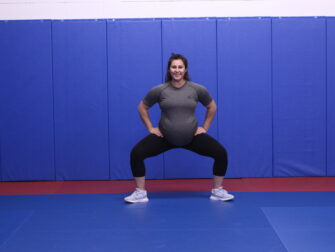Support your posture throughout the trimesters and feel great with pregnancy pelvic floor exercise.
As you progress throughout pregnancy, your center of gravity, balance, body control, and biomechanics change. All of which affect your core and pelvic floor strength and stability.
Maintaining your fitness throughout pregnancy has a list of benefits. Among those being the importance of supporting posture and labor.
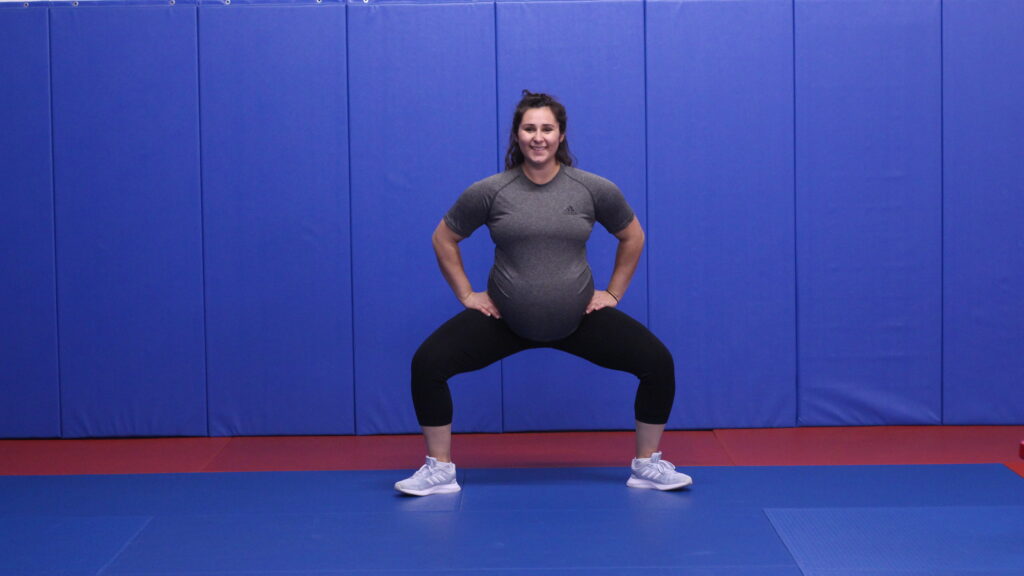
Why is pelvic floor exercise important in pregancy?
The National Strength and Conditioning Association states, “Although it is important to strengthen all the major muscle groups, personal trainers should emphasize abdominal and pelvic floor strength because these muscles provide a basis for postural support and prepare a woman for labor,” (478).
During pregnancy, the abdominals and pelvic floor muscles gradually weaken over time. This is due to long term lengthening as well as a steady increase of weight carried in these areas.
When muscles are weak or underactive, the surrounding muscle groups will compensate to support the spine and weight in order to realign. Leading them to become overworked and even fatigued, causing an otherwise imbalanced posture.
Because of the shift in our center of gravity during pregnancy, these imbalances are commonly found in the shoulders and hips. These muscular imbalances can cause hip discomfort and/or back pain throughout pregnancy.
For a complete breakdown of the importance and effects of proper postural alignment, check out my post The Best Exercise To Relieve Prenatal Back Pain. There I discuss how to identify muscular imbalances common in pregnancy as well as the best stretches and exercises to correct them. And you can even join me for a Postural Corrective Workout designed for prenatal moms!
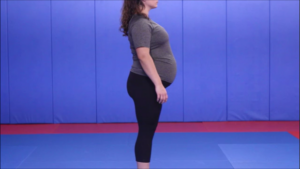
However, being proactive to strengthen the abdominal and pelvic floor muscle groups can support spinal alignment throughout pregnancy.
How can I strengthen my pelvic floor during pregnancy?
In order to best create our mind-muscle link when activating and strengthening, you may want to know exactly where/what your pelvic floor is.
According to Varuna Raizada, M.D. and Ravinder K. Mittal, M.D. in The National Library of Medicine, the pelvic floor is made up of superficial and deep muscle layers that sit within the pelvis.
These muscles connect, support, and control the mechanisms of our (for lack of better words) bathroom antaomy.
As with any exercise during pregnancy, always get clearance from your physician before you begin.
Pelvic floor exercise can be done in early pregnancy and all the way through the 3rd trimester. Just be sure to check in with your doctor first and to take your time. Focus on your speed, mechanics, and form to best control your range of motion and intensity for safety. Listen to your body and be respectful of your limitations by modifying as needed. Many times, incorporating a chair or an exercise ball can help resolve your range of motion limitations as you near the end of pregnancy.
Exercises to ACTIVATE the pelvic floor
To directly activate these muscle groups, the exercise you will want to start doing is known as a kegal. A kegal is performed by engaging (think lifting up or holding in pee/poop/gas) and relaxing the pelvic floor. There are a number of ways to perform kegals for improved strength.
Just as any other muscle group, simply contracting and relaxing the muscle for a given amount of reps and sets will be sufficient to improve musular strength and endurance. This could be done in 2 to 3 sets of 10 reps, a few times a day.
You can also manipulate time under tension. Such as slowly engaging, holding, and/or relaxing the pelvic floor within each kegal. For example, think like a tempo squat. Lowering by 3 seconds, pausing at the bottom for 3 seconds, and standing back up by 3 seconds.
Another way to vary your routine is by adjusting your position while you perform the reps. Such as doing some while sitting, laying, or standing.
It is important to strengthen the pelvic floor. It is also important to be wary of doing too much too quickly. You want to respect your body and it’s limits to avoid injury. Take your time to build your pelvic floor strength and endurance. Remember, pregnancy is a marathon, not a race!
Kegals are great for activating the pelvic floor, however it is important to also support it as well. The key to a supported pelvic floor is a strong and stable core.
Exercises to SUPPORT the pelvic floor
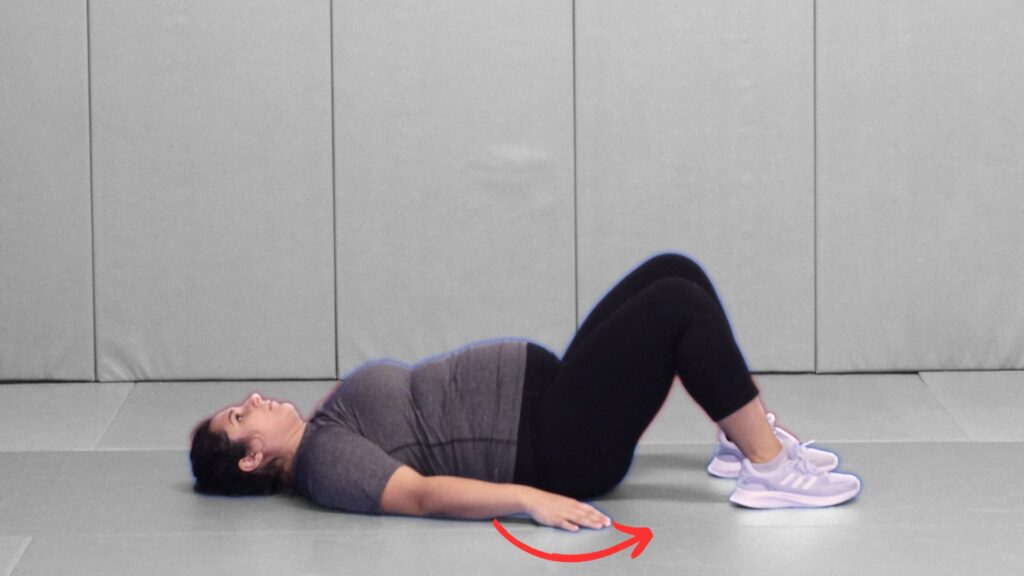
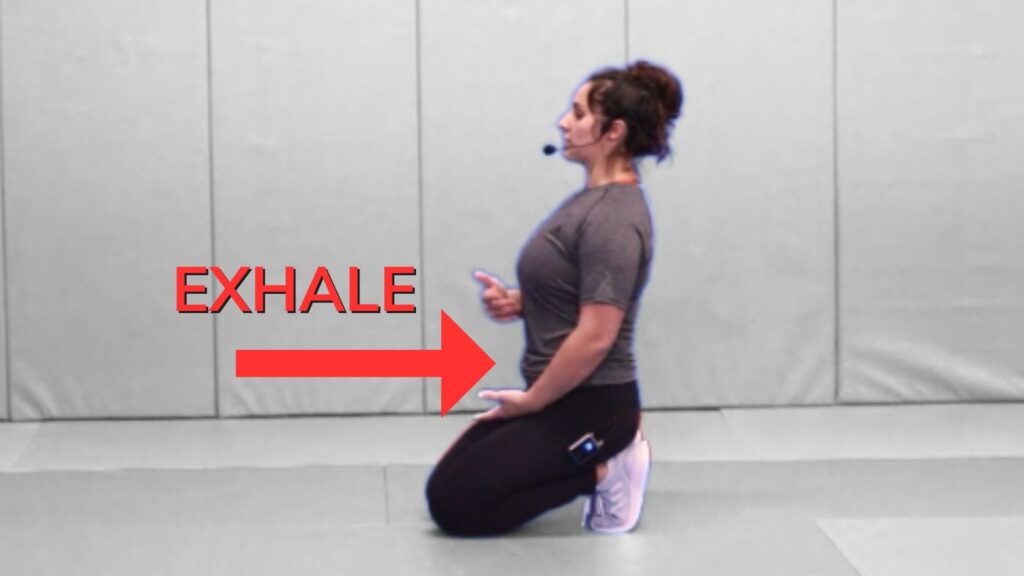
Starting with the abdominals, we want to focus on the transverse abdominis. The transverse abdominis are the deep core muscles that support the lumbar spine. There are two exercises that you can and should incorporate throughout your entire pregnancy to activate and strengthen these deep core muscles.
Vacums. To perform, you will exhale and slowly draw your belly inwards towards your spine. Once you can no longer draw in, you will slowly inhale as you release. Very similar to typical deep breathing techniques. Vacuums can be performed upright while sitting or standing, or even in a table top position on your hands and knees. Find the position that is most comfortable to you and allows the most control of your range of motion.
Pelvic Tilts. To perform, you slowly flex your abdominals and tilt your pelvis backwards onto your sitting bones. Try to imagine that you are pressing your low back outwards behind you or scooping your tailbone down. This can be done on your back (be careful to miminize time spent supine once you enter your second trimester) as well as upright in a seated position. PRO TIP: I have found that once you are in the second trimester, pelvic tilts are the best pregnancy pelvic floor exercise on a ball.
The abdominals are the primary muscles we most often think of and refer to when it comes to core strength, but they are only part of it. Your core consists of the trunk of your body, think shoulders to hips. Our shoulder and hip girdles also support and determine the alignment of our posture.
Incoroporating compound lower body exercises will help activate pelvic floor muscles as well as strengthen pelvic-supporting muscle groups. These muscle groups include the glutes, hamstrings, quadriceps, and internal/external hip rotators.
Compound lower body exercises to include into your workout routine are squats, sumo squats, deadlifts, glute bridges, sumo deadlifts, and lunges (forward/reverse/lateral).
Incorporating compound upper body exercises that focus on posterior chain activation will help support the spine and added weight to the front of the body.
Compound upper body exercises to include into your workout routine are overhead presses, (bent over) rows, reverse flys, birddogs in plank or table top, and modified push ups. All of which call on transverse abdominis engagement as will as posterior chain activation.
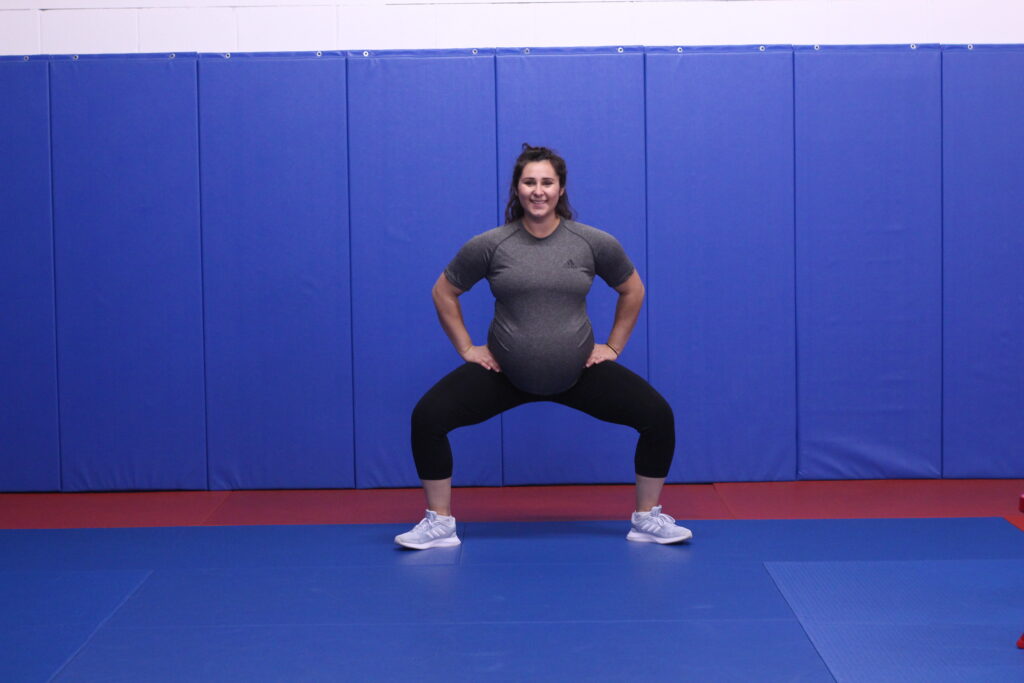
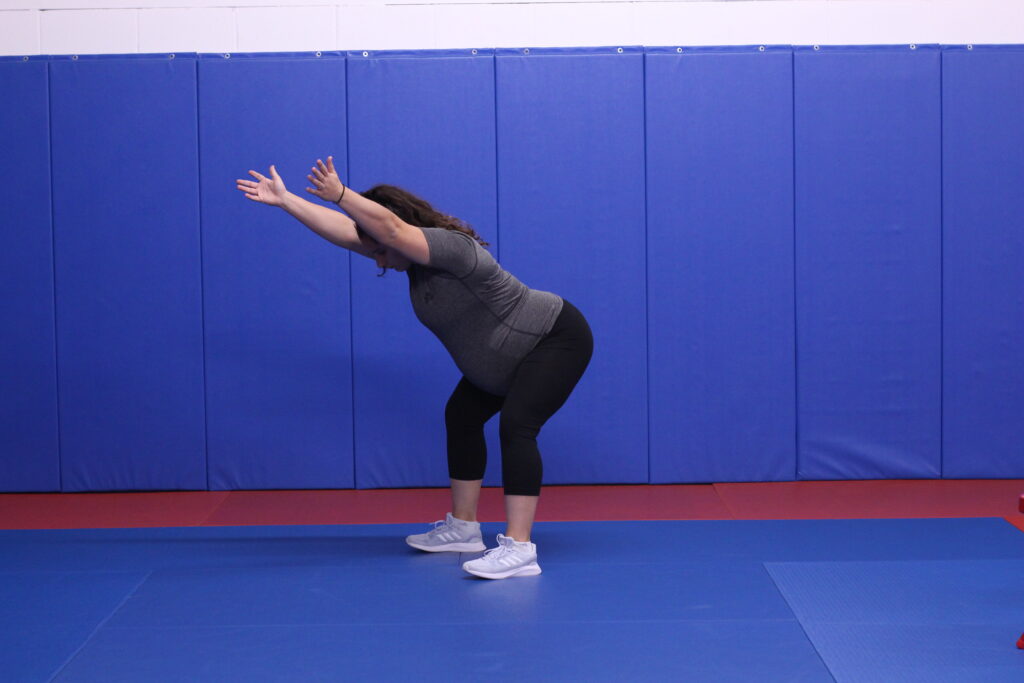
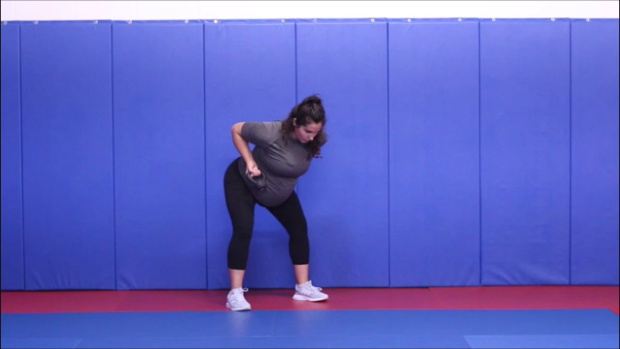
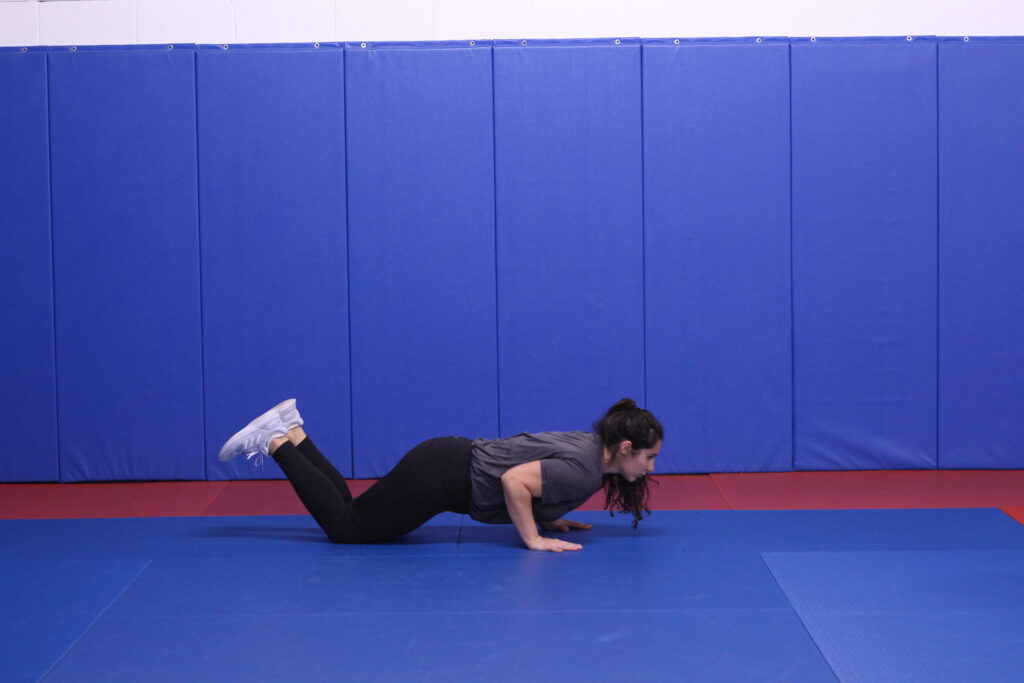
For a more in depth explanation on some of these exercises, head to my Exercise Library. I created a collection of videos with a complete breakdown on many basic movements as well as their modifications (and progressions).
All of these moves can be done with no equipment or you can add light dumbbells or even resistance bands for a little more challenge.
And if you want more guidance, I have made a Prenatal Safe Core Workout for All Trimesters!
Maintaining your fitness comes with a variety of benefits, including a more comfortable pregnancy. Pregnancy pelvic floor exercise can also help with labor, too.
“Although it is important to strengthen all the major muscle groups, personal trainers should emphasize abdominal and pelvic floor strength because these muscles provide a basis for postural support and prepare a woman for labor.”
The National Strength & Conditioning Association
What exercises make labor easier?
Along with postural support, a strong pelvic floor helps women prepare for the pushing and delivery phase of labor.
The National Strength and Conditioning Association (2012) says, a properly designed prenatal exercise program can provide the benefit of a shorter and less painful active phase of labor. The NSCA (2012) explains,
- Vacuums and pelvic tilts prepare women for the pushing phase of labor by strengthening the transverse abdominis.
- Kegals help women learn how to conract and relax the pelvic floor, so that the baby can be delivered more easily.
Keep in mind that most calisthenics and compound exercises (movements that use multiple muscle groups at a time) generally improve and support core and floor strength as well. Even during basic exercises that we often do everyday, your body requires the floor and core to activate. Things like planks, squats, push ups, lunges, and even walking workouts.
The body works as a unit to perform. As long as the exercise is deemed safe by your doctor, it will still be beneficial to your labor and delivery.
One comparison I like to make from my own experiences of having children is a squat. During my pushing phase of labor, the position I was in closely resembled a standard squat. If you have ever squatted with a heavy or challenging weight, you may have gotten “stuck” at the bottom. You know, where there is a little pause that requires you to really bear down and drive to finish the concentric (or standing) phase of the exercise.
Well, pushing during delivery felt quite similar to that. And you don’t push once nor for a short period. My first took about 45 minutes, which is supposedly quick for your first delivery. Even though that sounds long, I felt that my exercise routine leading up to that day really helped me mentally connect and have the endurance for a successful delivery. It made me feel great knowing that all my hard work turned out to be practice for the big day! So practice, practice, practice. Help your future self and start preparing for labor now. In fact, you can start with my Third Trimester Strength Workout For Labor.

That said, it is never too late to start pregnancy pelvic floor exercise, nor too early!
When should you start doing pelvic floor exercises in pregnancy?
As with any exercise during pregnancy, always get clearance from your physician before you begin. Pregnant or not, it’s important to check in with your doctor to know what exercise, if any, is safe based on your personal medical health and history.
Once cleared by your doctor, pelvic floor exercise can be supportive throughout your entire pregnancy. Regardless of where you are in pregnancy, start strengthening your pelvic floor as soon as possible.
In fact, get a leg up and get started even before pregnancy.
Pre-pregnancy pelvic floor exercise
If you are trying to conceive, add in pre-pregnancy pelvic floor exercise to your regular fitness routine. This will build a great foundation before your body starts to undergo the changes and weight gain of pregnancy. As you progress through pregnancy, your body will rely more and more on the strength and endurance of your pelvic floor. It is much harder to build your fitness during pregnancy rather than before it.
Think of it like running a marathon. If you dive in with no practice or conditioning, you are likely to fatigue quickly. But training beforehand will improve your endurance for the long haul.
As you progress through pregnancy, you will gain a majority of your weight in the abdominal region. This willl weaken and stretch your abdominals as well as force the surrounding muscle groups to compensate. Making it much more challenging to strengthen your core.
Before pregnancy, take advantage of your ability to enhance your core strength. Effective pre-pregnancy pelvic floor exercises to include are planks (all varieties), bent over rows, reverse flys, 6-inch holds, push ups, and back extensions (AKA supermans). These target the entire trunk of the body, sides, front, and back.
Other exercises you want to be sure to include are compound lower body movements. Things like squats, deadlifts, glute bridges, and lunges. All of which are movements that strengthen the muscle groups that stabilize and support the hip girdle and core.
A strong and stable core will support your pelvic floor during pregnancy.
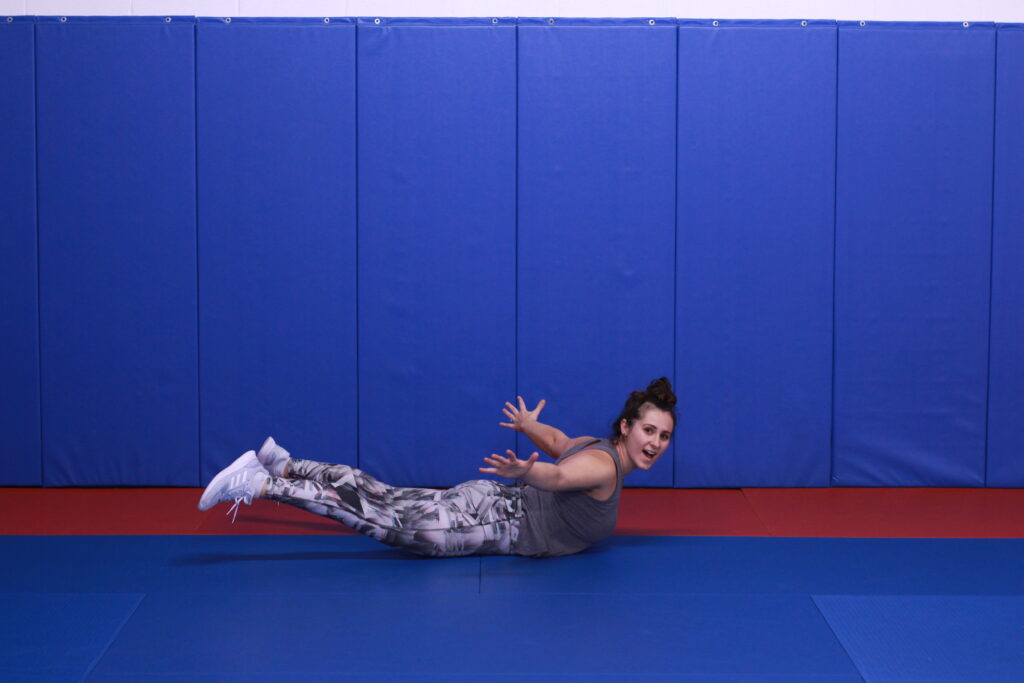

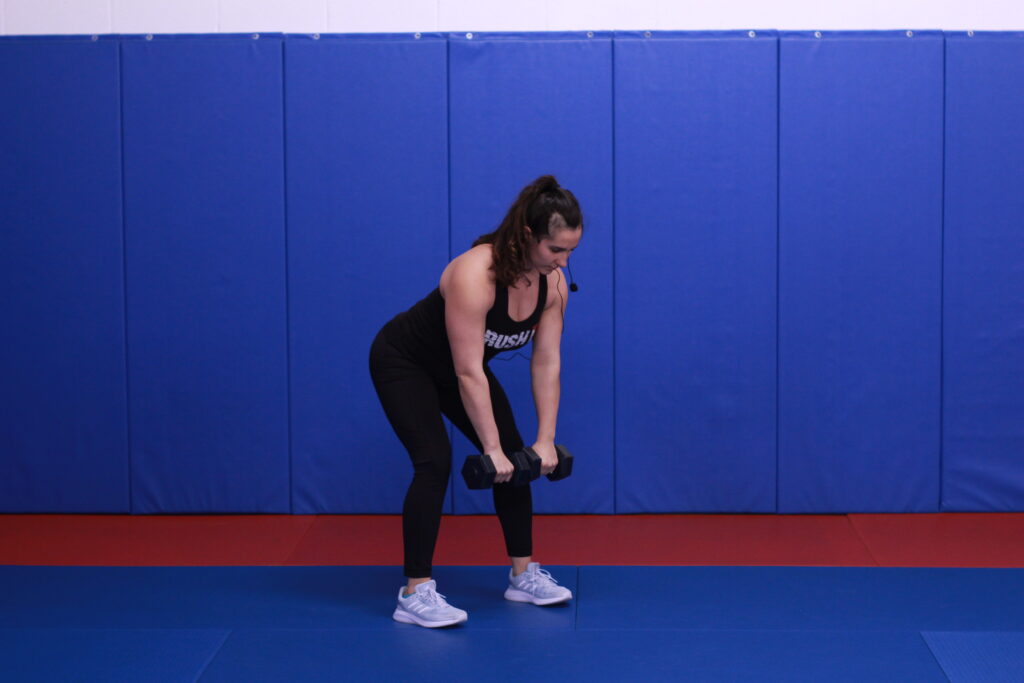
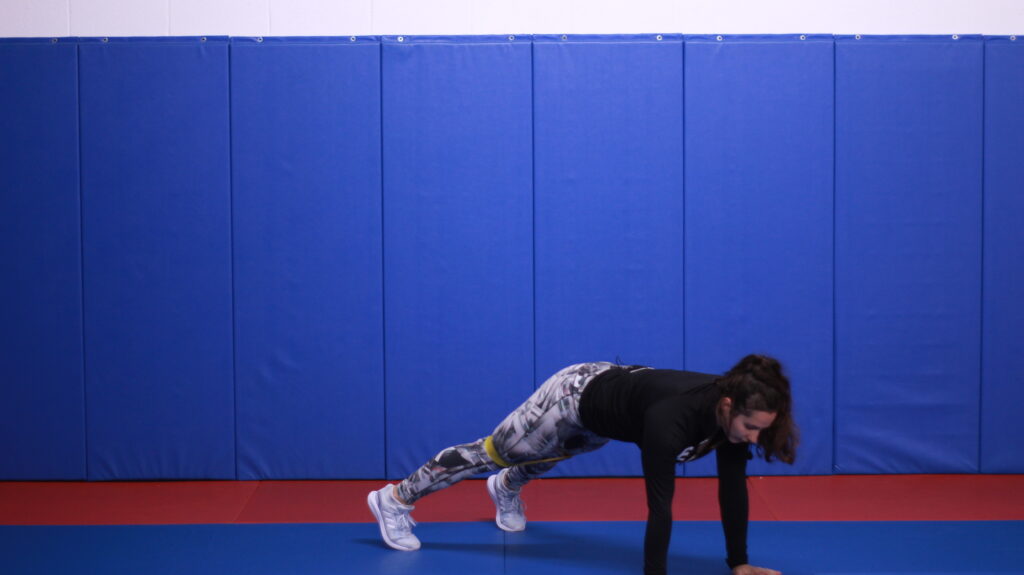
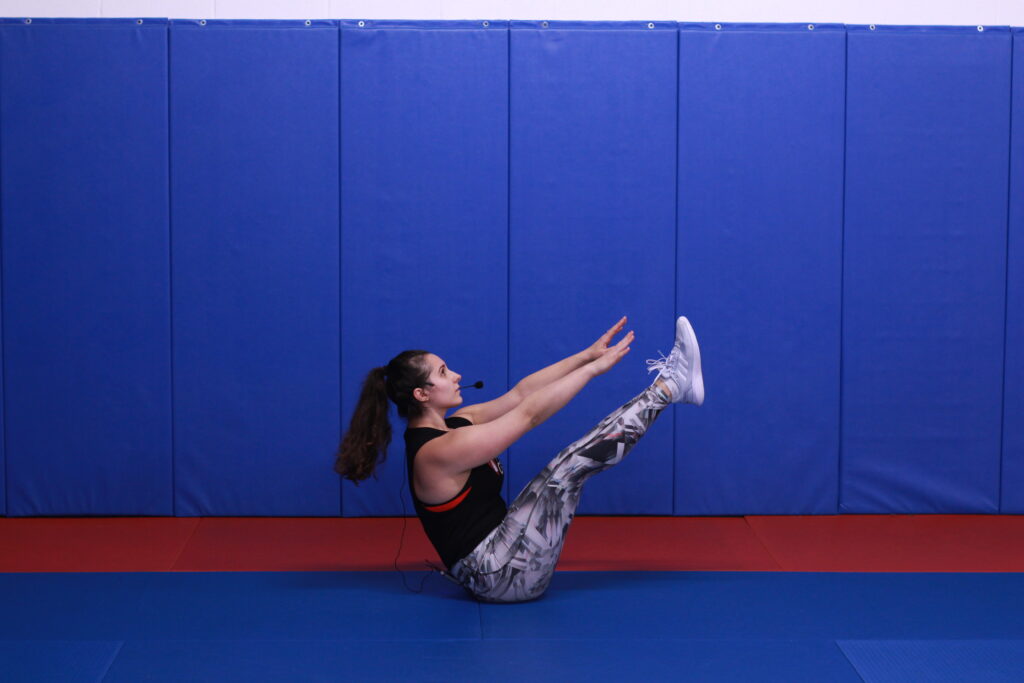
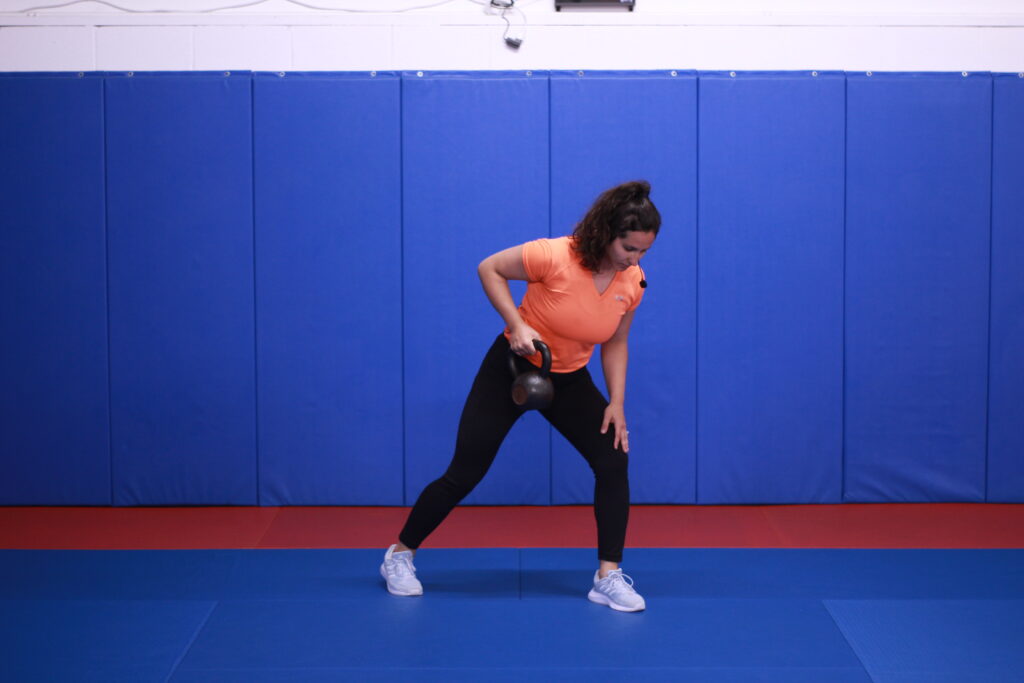
What to do after the baby?
Many of the exercises performed throughout your entire pregnancy are also beneficial afterwards to rebuild postpartum core strength. For a visual demonstration, check out my video of these post pregnancy pelvic floor exercises on youtube here! After you have your baby, head over to my Postpartum archives for a collection of posts to help you get on track with your fitness.
References
(2012). NSCA’s Essentials Of Personal Training (J. W. Coburn & M. H. Malek, Eds.; Second, pp. 477–479) [Review of NSCA’s Essentials Of Personal Training]. Human Kinetics. (Original work published 2004)
Raizada, V., & Mittal, R. K. (2008). Pelvic Floor Anatomy and Applied Physiology. Gastroenterology Clinics of North America, 37(3), 493–509. https://doi.org/10.1016/j.gtc.2008.06.003
